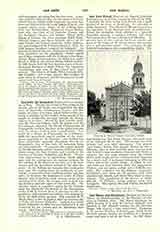

San Leon del Amazonas, PREFECTURE APOSTOLIC OF, in Peru. Though the section of Peru lying on the eastern side of the Andes was comprised in the Dioceses of Ayacucho, Chachapoyas, Cuzco, and Huanuco, yet there were many pagan Indian tribes, formerly evangelized by the Jesuits, living outside of the sphere of civilization, roaming through the forests, subject to no laws. Moved by their pitiable condition the Peruvian bishops, with the approval of the Government, requested the Sacred Congregation of Propaganda, towards the close of the nineteenth century, to interest itself in their evangelization. As a result by a, Decree of Propaganda, on February 5, 1900, the uncivilized eastern portion of the state, known popularly as “la Montana“, was divided into three prefectures Apostolic depending directly on Propaganda, that of San Leon del Amazonas being the most northerly. It comprises the regions drained by the Rio Maranon and the Amazon with their tributaries, except the Ryo Ucayaly, and extends to the frontiers of Ecuador, Colombia, and Brazil. To prevent controversies as to jurisdiction, which might arise with the existing sees, the mission territory, by the wording of the Decree of erection, is to be coextensive with the uncivilized portions of the older dioceses. As the Indians are nomadic the missionaries have first, by teaching them the rudiments of agriculture, to overcome their wandering habits, and then strive to inculcate the fundamental truths of Christianity; but frequently when success seems to be crowning their efforts the savages yield to their roving instincts, and take again to their forest life. The mission, which is supported partly by the Government but chiefly by the Society of the Propagation of the Faith in Eastern Peru, is entrusted to the Augustinians and contains four priests, who depend directly on their father general. The superior, R. P. Paulin Diaz, resides at Iquitos; there are stations also at Peba and Puento Melander. Another was established at Huabica in 1903, but six months later it was destroyed by the Indians and the missionary martyred.
A. A. MACERLEAN

